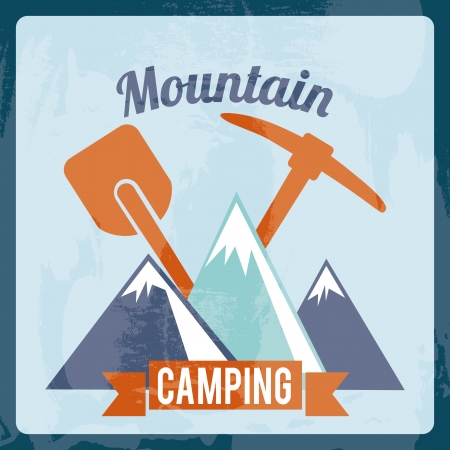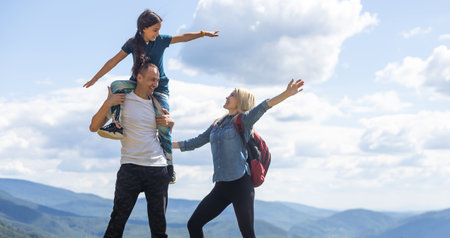1. Understanding Common Hiking Emergencies
Heading out on a family hike is one of America’s favorite ways to enjoy the great outdoors, but it’s important to know that even the most beautiful trails can present unexpected challenges. Being aware of common emergencies helps families prepare and respond safely if things don’t go as planned. Here are some typical situations hikers might face on U.S. trails:
Common Emergencies on American Trails
| Emergency Type | Description | Why It Matters |
|---|---|---|
| Getting Lost | Losing your way due to confusing trail markers or wandering off the path. | Can lead to panic, dehydration, or exposure to harsh conditions if not found quickly. |
| Sudden Weather Changes | Rapid shifts in weather like thunderstorms, heavy rain, or temperature drops. | May cause hypothermia, slippery trails, or flash floods that put hikers at risk. |
| Medical Issues | Injuries such as sprains, cuts, insect bites, or allergic reactions. | Without quick treatment, minor injuries can turn serious or prevent safe return. |
| Wildlife Encounters | Unexpected contact with animals like bears, snakes, or aggressive insects. | Improper response can escalate danger for both humans and animals. |
| Lack of Supplies | Running out of water, food, or essential gear during a hike. | Can result in dehydration, exhaustion, and difficulty coping with emergencies. |
The Importance of Preparedness
No one expects trouble when setting out for a fun day in nature, but being prepared makes all the difference. Families who understand potential emergencies are more likely to carry the right gear, communicate plans clearly, and stay calm under pressure. Teaching kids what to do if something goes wrong helps everyone feel safer and more confident on the trail. In upcoming sections, we’ll explore practical steps every family hiking group can take to get ready for anything the trail throws their way.
2. Building a Family Emergency Plan
Step-by-Step Action Plan for Families
When youre heading out on a hike with your family, its important to be prepared for anything. Developing an emergency plan isnt just for experts—every family hiking group should have one. Heres how you can create a simple but effective emergency plan before you hit the trail.
1. Communication Strategies
Make sure everyone knows how youll communicate if someone gets separated or if theres an emergency. Cell phones might not work in remote areas, so have a backup plan like whistles or walkie-talkies. Teach younger kids a few basic hand signals or sounds they can use to get attention.
| Method | When to Use | Notes |
|---|---|---|
| Cell Phones | If there is service | Keep fully charged; carry power banks |
| Whistles | No service / Separated from group | Three short blasts means help needed |
| Walkie-Talkies | No cell service, larger groups | Check batteries before hike |
| Hand Signals | No sound/cant shout | Teach kids simple signals for “help” or “OK” |
2. Designated Meeting Points
Before you start hiking, choose spots along your route where everyone will meet up if you get separated. Pick easy-to-spot landmarks like big rocks, trail signs, or clearings. Make sure everyone knows what these places look like and how to reach them safely.
Tips for Choosing Meeting Points:
- Select locations that are visible and unique (not easily confused with other spots).
- If hiking in a national park, use numbered trail markers as meeting points.
- Review these points together at the trailhead and remind everyone throughout the hike.
3. Creating a Buddy System Tailored for Family Groups
A buddy system helps make sure no one is ever alone on the trail. Pair up adults with kids or older siblings with younger ones. Check on your buddy regularly, especially during breaks or challenging parts of the hike.
| Buddies Pairing Example | Main Responsibility | Why It Works for Families |
|---|---|---|
| Parent + Young Child | Stay together; parent leads navigation and safety reminders | Keeps little ones safe and reassured |
| Siblings Close in Age | Encourage teamwork; check on each other often | Makes kids feel responsible and connected |
| Grandparent + Teenager | Younger helps older family member with tough terrain; shares knowledge of tech tools (like GPS) | Cultivates trust and learning between generations |
Quick Checklist Before You Hike:
- Review communication methods with everyone.
- Name all designated meeting spots clearly.
- Create buddy pairs and talk about their roles.
This way, your family will be ready to respond quickly and calmly if something unexpected happens on the trail.

3. Essential Gear and Emergency Kits
When it comes to hiking with your family in the U.S., having the right gear can make all the difference in an emergency. Being prepared means carrying equipment that keeps everyone safe, comfortable, and ready to handle unexpected situations. Here’s what you need to know about building an effective emergency kit for your family hiking group.
Must-Have Items for U.S. Hiking Conditions
Weather, terrain, and wildlife can vary widely across America’s national parks and trails. Whether you’re trekking through California’s redwoods or exploring the Rockies, these essentials should be in every pack:
| Category | Recommended Gear | Family-Friendly Tips |
|---|---|---|
| First Aid Supplies | Bandaids, antiseptic wipes, gauze pads, adhesive tape, tweezers, allergy medication, child-appropriate pain relievers | Choose fun bandage designs for kids; include medications suitable for all ages |
| Signaling Devices | Whistles, small mirror, flashlight/headlamp with extra batteries, brightly colored bandana | Give each child a whistle and teach them how to use it if separated; glow sticks are a fun backup light source for children |
| Navigation Tools | Topographic map of the area, compass or GPS device (with preloaded maps), cell phone with portable charger | Laminated maps are more durable; let kids help track your route on the map to keep them engaged |
| Extra Food & Water | High-energy snacks (trail mix, granola bars), enough water for each person (plus extra), electrolyte drink packets | Packing kid-friendly snacks makes breaks easier; collapsible water bottles save space in small backpacks |
| Weather Protection & Extras | Ponchos/rain jackets, sun hats, sunscreen, insect repellent, emergency blankets (space blankets) | Tiny travel-size sunscreen or bug spray fit well in kids’ daypacks; choose bright-colored ponchos for visibility |
How to Organize Your Family’s Emergency Kit
- Create individual kits: Every family member should have their own mini kit with basics: a whistle, snack bar, water bottle, and bandages.
- Main group kit: Adults carry shared items like comprehensive first aid supplies, navigation tools, and weather gear.
- Regular check-ups: Go over the kit contents before each hike—make sure nothing is expired or missing.
- Packing tip: Store gear in clear zip bags so items are easy to find in a hurry.
Family-Friendly Emergency Kit Checklist
- Bandaids & first aid supplies suitable for kids and adults
- Whistle for each person (attach to backpack straps)
- Laminated trail map & compass or GPS unit
- Sunscreen & bug spray in travel sizes
- High-calorie snacks and at least 1–2 liters of water per person (more in hot climates)
- Poncho or rain jacket for everyone—even on sunny days!
- Cell phone with portable power bank (but don’t rely solely on cell service)
- Emergency blanket (space blanket) for warmth or shelter if needed
- Tweezers—for ticks or splinters often found on U.S. trails!
Quick Tip:
If you have young kids, let them decorate their emergency kit pouch with stickers. It helps them remember which one is theirs—and gets them excited about safety!
4. Navigating with Maps, Apps, and Technology
Why Navigation Skills Matter for Family Hikers
Getting lost is one of the most common emergencies for hikers, especially families with children. Knowing how to use both traditional and modern navigation tools is key to keeping everyone safe and confident on the trail. When you understand how to read a map or use your smartphone’s GPS, you’re less likely to get off track—and you’ll be better prepared if something unexpected happens.
Traditional vs. Modern Navigation Tools
| Tool | How It Works | When to Use |
|---|---|---|
| Topographic Map & Compass | Paper maps show land features; a compass helps with direction. | When phones lose signal or battery; as a backup plan. |
| GPS Unit | Handheld device that pinpoints your location via satellites. | In remote areas where phone apps might not work well. |
| Mobile Apps (e.g., AllTrails, Gaia GPS) | Smartphone apps provide real-time tracking and downloadable maps. | For easy access, sharing locations, and saving routes before heading out. |
Must-Know Tips for Family Hiking Groups
- Always carry a paper map and compass—even if you prefer tech tools. Electronics can fail, but paper doesn’t run out of batteries.
- Download maps for offline use before leaving home. Many hiking areas in the U.S. have spotty cell service.
- Practice using your tools before the trip. Teach kids how to orient a map and follow simple compass directions.
- Select user-friendly apps that offer family sharing features or emergency alerts.
- Mark important waypoints like trailheads, water sources, and shelters ahead of time.
- If someone gets separated, agree on a meeting point shown on your map or app.
Navigating Safely: A Quick Reference Guide
| If You Get Lost… | What To Do First |
|---|---|
| Your phone works | Open your hiking app or GPS—check your location and retrace your steps if safe. |
| No signal/battery dead | Use your paper map and compass—find known landmarks to reorient yourself. |
| You’re unsure what to do next | S.T.O.P.: Sit down, Think, Observe surroundings, Plan your next move together. |
Pro Tip:
The National Park Service recommends every family group appoint a “navigator” for each hike—let kids take turns! This builds confidence and ensures everyone understands the route before setting off.
5. Reacting in Real-life Scenarios
What to Do If Someone Is Injured
When hiking with family, accidents can happen unexpectedly. If someone gets hurt, the first step is to stay calm. Check the scene for any immediate dangers before approaching the injured person. Once it’s safe, assess their condition—are they conscious, breathing, or bleeding? Use basic first aid: apply pressure to wounds, splint any possible broken bones, and keep the injured person warm and comfortable while you figure out your next steps.
Emergency Response Steps
| Situation | Immediate Action | Next Step |
|---|---|---|
| Minor Cuts/Scrapes | Clean wound, apply bandage | Monitor for infection |
| Serious Bleeding | Apply firm pressure with clean cloth | Call for help if bleeding won’t stop |
| Painful Sprain/Fracture | Immobilize limb, avoid moving unnecessarily | Signal for help, keep person still |
| Unconsciousness/No Pulse | Check airway, breathing, pulse; start CPR if needed | Send someone to get help immediately |
How to Signal for Help
If you need outside assistance on the trail, knowing how to signal is critical. Use a whistle (three blasts is the universal distress signal) or brightly colored clothing to attract attention. At night, use a flashlight in sets of three flashes. Try to move to an open area where you’re more visible from above.
Common Signaling Methods in the U.S.
- Whistle: Three short blasts repeated at intervals mean “Help needed.” Carry a whistle on your backpack for emergencies.
- Cell Phone: If you have service, dial 911 and give your exact location using GPS coordinates if possible.
- Reflective Blanket or Mirror: Flash sunlight toward searchers or passing aircraft.
- SOS Signal: Spell out “SOS” using rocks or branches in an open area.
Staying Calm During Emergencies
Panic can make any situation worse. Take deep breaths and talk calmly with your group. Assign small tasks: someone watches over the injured person, another tries signaling for help, while others gather supplies or keep everyone warm. Keeping busy helps manage anxiety and keeps everyone focused.
Communicating Effectively With Rescue Teams
If you reach rescue teams by phone or when they arrive:
- Be Clear: State your name, location (use landmarks or GPS if available), and nature of the emergency.
- Mention Medical Needs: Let them know how many people are injured and what kind of help is needed.
- Stay Put: Unless instructed otherwise, stay where you are so rescuers can find you quickly.
- Follow Instructions: Listen carefully and do exactly as rescue personnel advise.


